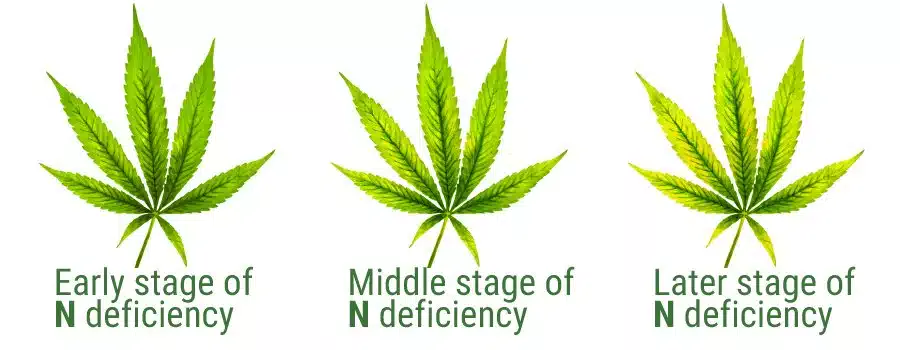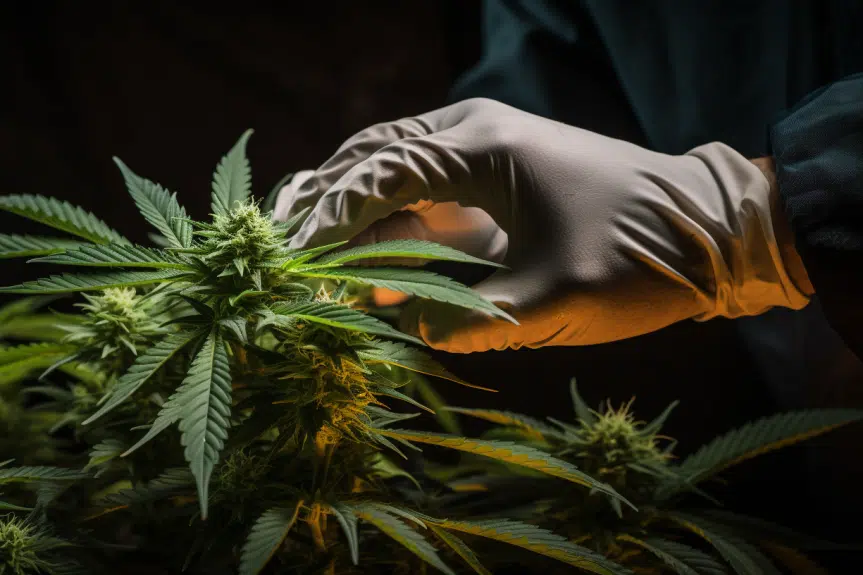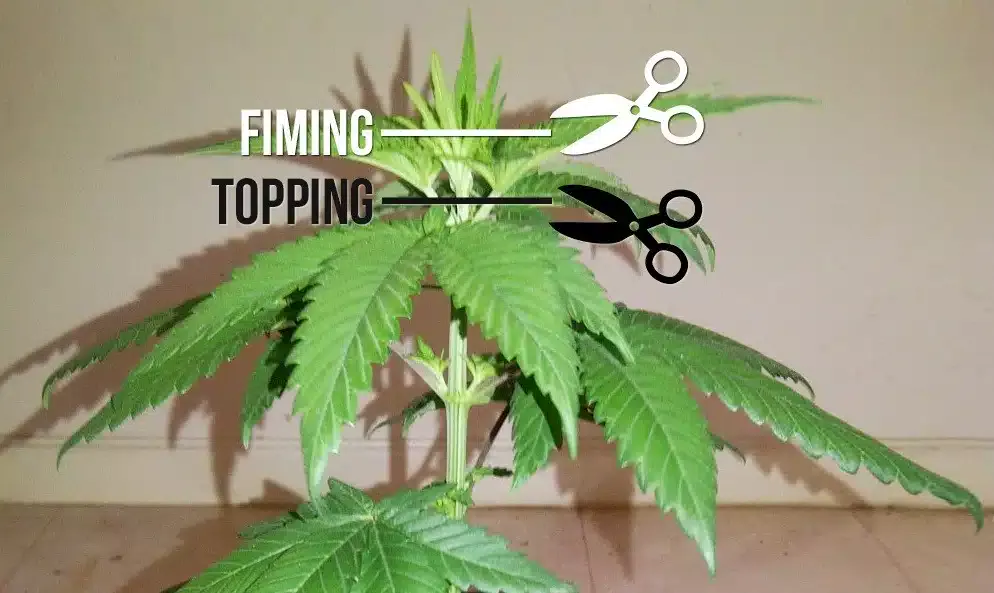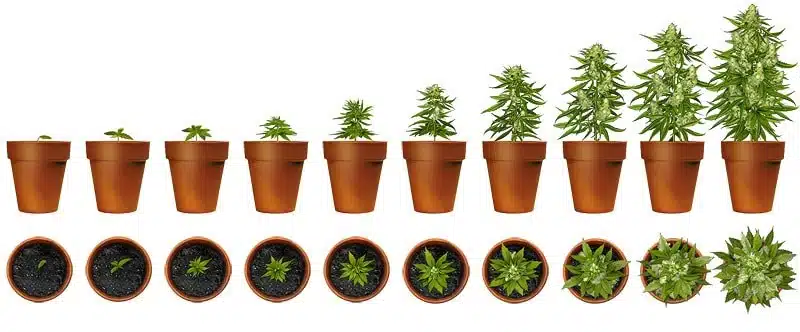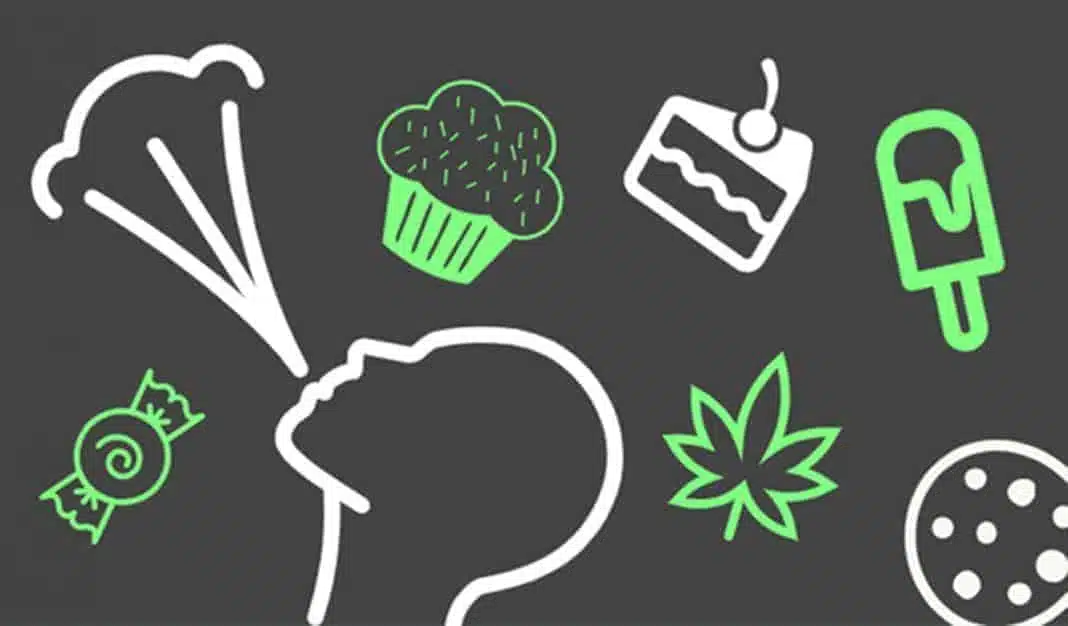Nitrogen Deficiency During Flowering
First of all, what is nitrogen deficiency, and does nitrogen deficiency during the flowering stage affect the quality of weed produced? Well, nitrogen deficiency is a condition where the plants lack the required amount of nitrogen for their growth. Nitrogen is one of the vital nutrients for weed’s health and growth. It’s among the three constitutes of NPK nutrients (Nitrogen, Phosphorus, and Potassium) which are essential to plant growth.
Nitrogen is an integral component of the green pigment (chlorophyll) found in the plant that gives its green color plus a requirement for the photosynthesis process. And so, inadequate nitrogen intake is a major deficiency that makes leaves start turning yellow and causing slow growth. As a weed grower, you need to identify earlier when cannabis plants start showing nitrogen deficiency symptoms and know how to fix them.
In this article, I shall share with you how to deal with nitrogen deficiency. But first, let understand the following;
Effects of nitrogen in a cannabis plant
Nitrogen is essential for plants to produce amino acids, which are building blocks of proteins needed for plant cells to grow. It also helps with chlorophyll which is required for the photosynthesis process. Furthermore, the inclusion of phosphorus and potassium is necessary for plant growth and development.
Also, the shortage of nitrogen causes the yellow discoloring in marijuana, leading to poor, stunted, tiny cannabis plants, leading to the death of the plant. Moreover, excess nitrogen causes excessive growth of cannabis plant leaves and stems, resulting in weakening the root system hence less absorption of nutrients.
Nitrogen as a mobile nutrient
The required nutrients for plant growth vary in their ability to move certain nutrients from one part of the plant to another. Therefore, knowing how these nutrients move is the key to diagnosing weed deficiencies, i.e., cannabis leaf turning yellow shows that nitrogen is in less supply.
When the deficiency occurs in old, large cannabis leaves (yellowing), it shows that there is good mobility of nutrients as they are being transported to where they are best needed.
Immobility of nutrients leads to the poor growth of the plant since nutrients can’t be relocated to new growth areas.
Nitrogen deficiency during the flowering stage
After a successful vegetative stage, nitrogen is still essential for the flowering stage. It’s the stage where cannabis is growing buds for flowering. Here most of the leaves start turning yellow since all the focus has been directed to the blooming of buds.
The old yellowing leaves die and are not replaced by new leaves since the focus is on buds development leading to a mass loss of leaves. Therefore, if you fail to fix this problem in the early flowering stage, you may experience adverse impacts later on. This is simply because leaves start turning yellowish can spread the problem to other parts of the plant and could largely affect the plant’s flowering process, leading to poor buds growth.
You can remedy this by spraying plants with a mix of nitrogen and water for about 15 minutes before exposing plants to light. Depending on the flowering stage, plants may absorb nitrogen through leaves or buds.
During the last period/weeks of the flowering stage, you can flush out excess nitrogen, which helps the buds with a more refined quality taste and potency. Due to this fact, too much nitrogen in buds ruins the perfect taste of the harvest; hence flushing out is necessary.
How to identify nitrogen deficiency:
-
Stunted growth
This is the slow development of the cannabis plant or no growth at all.it may be caused by so many factors such as
- Old/low-quality seeds
- Clone stress
- Overwatering
- Lack of enough nutrients
Lack of enough nutrients like nitrogen may make your plant have stunted growth which is not healthy for the plant. Stunted growth is accompanied by few buds and leaves, which are much smaller. If nitrogen deficiency in cannabis is left unfixed, it may lead to premature flowering of the weed plant, resulting in the development of tiny buds.
-
Yellowing of leaves
This condition occurs when the plant starts losing its green color, and yellow spots are seen. It’s the earliest sign since old leaves turn yellow. If this problem starts growing in the main leaves and up to new parts, it needs to be fixed to avoid leaves from curling, wilting, and eventually dying.
This is a sign of nitrogen deficiency, and you can fix it by spraying water and nitrogen mix before exposing it to lights. This problem mainly occurs during the earlier days of flowering as buds start developing.
Ways to solve nitrogen deficiency
1. Monitor good pH levels
The pH levels will influence how roots absorb different nutrients since they take a different form of absorption. Here the cannabis plant will nourish well at a pH level of between 5.5 and 6.5. Testing these levels regularly will ensure that the soil is in optimum condition and all nutrients provided will be absorbed.
During the early flowering stage, plants that have shown deficiency can be given more nitrogen for remedy. However, you need to be careful since as the buds mature, they will need less nitrogen for greater quality, and leaves will be yellow naturally. Higher nitrogen intake will be toxic to plants and can be fixed by flushing out.
2. Defoliation
Defoliation is the process of getting the lid of excess leaves from your plant. Applying this method well in the flowering stage will make the plant focus on producing buds, leading to increased yields, higher density, and quality bud growth. You can also trim yellow leaves to save more nutrients.
3. Nitrogen toxicity
Excess nitrogen intake in a plant may cause excessive plant overgrowth of stem and leaves. It affects the plant negatively since it alters the photosynthesis process.
Too much nitrogen in buds ruins the taste and potency of the harvest; hence fixing and adjusting amounts of nitrogen is necessary.
4. Watering
Watering is a balanced technique of providing the plant with the required amount of water. Deficiencies may happen since the water isn’t moving well in the plant system. Less water in cannabis plants may make plants thirsty hence wilting/dropping. At the same time, too much water may obstruct oxygen/nitrogen intake of the plant and may cause yellowing of leaves and brown scorch due to chronic overwatering. Balanced watering will be a key technique for quality yields and the development of the plant.
5. Environment
The environment provided in the flowering stage will have huge impacts on the final bud, density, potency, and yields. You have to give them optimum temperature since overheating will cause the buds to get discolored and crispy. You can fix this by increasing air circulation and altering time exposed to light.
Furthermore, a cold environment below 18 degrees may lead to slow growth, curled leaf tips, buds not growing properly, and unexplained nutrient deficiencies. You can remedy this by using heaters to raise the temperature and planting cold resistance strains.

